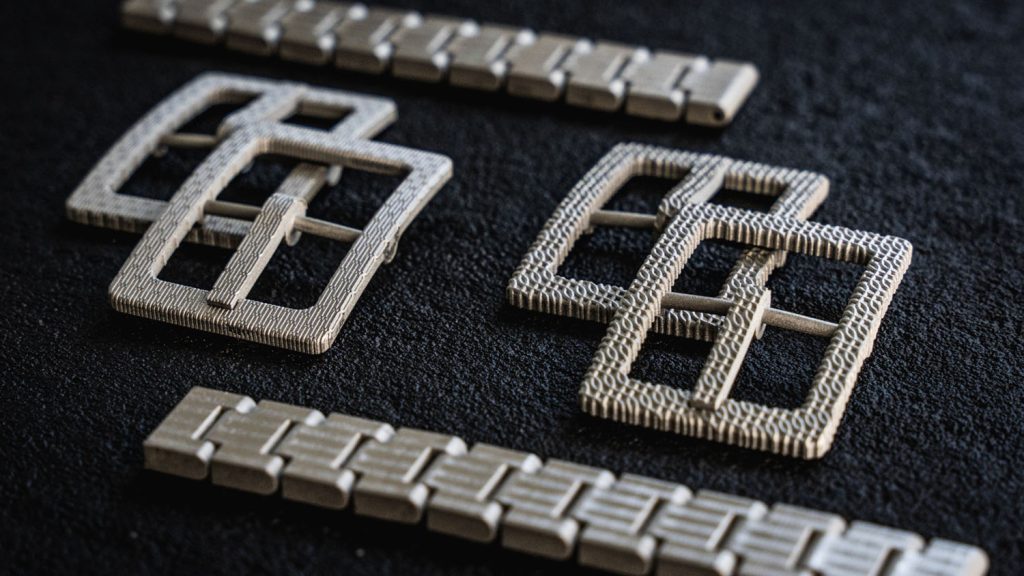Additive manufacturing is transforming jewellery, and Progold is at the forefront of the movement, producing perfect parts that require little polishing, reports Emilie Eisenberg
Damiano Zito, CEO of Progold, is far too discreet to disclose client names, but he assures DEVELOP3D that they include brands operating in the highest echelons of the fashion world.
“We are not talking about mass [produced] fashion accessories, or mass jewellery,” he says. “We are talking about brand jewellery and brand fashion accessories. People pay several thousand euros for a bag or several thousand euros for jewellery. People need perfect, and they are not open to paying these amounts for something that is not perfect.”
Zito took over the reins at Progold from his father back in 1997. A distributor of gold, silver and platinum alloys to jewellery manufacturers around the world, the company began to explore metal powders for 3D printing in 2008, investing in powder bed fusion (PBF) technology.
Having promoted these technologies and its feedstocks to their clients, in 2015, Progold spotted a gap in the market and began its own in-house service bureau, using its own PBF 3D printers to produce precious metal parts.
The company currently has ten printers in-house that can produce precision parts using 18K yellow, red and white gold and platinum, which it delivers to clients to be finished by skilled craftsmen.
Metals expansion
As fashion houses have expanded their lines, there has been a concomitant increase in the number of metal parts needed, too, from handbag clasps and buckles to jewellery items. The traditional approach of using electroplated copper and brass hardware has shifted to stainless steel parts, coated with a thin layer of precious metal using the PVD (physical vapour deposition) method.
The plating is often just a few microns thick, but requires no extra coatings to maintain the kind of smooth, long-lasting finish favoured by the biggest brands in luxury goods.
This shift has created another opportunity for Progold, allowing it to produce non-precious metal additive parts to be plated. However, the thinner coating is less capable of hiding the rougher surface blemishes of the PBF process.
“You can print whatever you want with a 3D printer, but you can polish only some of it,” says Zito. “If it’s a mechanical component, no problem. But if it’s an aesthetic piece? Would you go to buy an expensive piece of jewellery if, in some of the holes, it was rough? No!”
This led Progold to explore new additive technologies that require less post-processing, while still allowing design freedom when it comes to additive parts.
A partnership founded in 2021 with NanoParticle Jetting (NPJ) expert XJet saw Zito’s team bring an XJet Carmel 1400 M Metal System to its headquarters in Trissino, Italy. The technology sidesteps some of the issues associated with 3D printing with powders and lasers, by instead suspending metal or ceramic particles in a solution, before layering it (along with a support material) from high-resolution print heads.
A 300C build chamber evaporates the liquid ‘ink’, fusing the part into a solid. The soluble support material is removed easily once removed from the printer, before the green part is finished in a kiln.
Boasting an accuracy of 50 microns on dimensions up to 5mm, the surface finish of 316L stainless-steel part, once sintered, is so good that it requires minimal postprocessing before a PVD coating can be applied to give a beautiful high-end finish.
For Progold, this has been a resounding success, leading to the company to produce a wide range of hardware, jewellery and watch cases using the process.
Metallurgy know-how
Progold’s CEO says that, in addition to its production capabilities, the Italian company’s background in metallurgy and cutting-edge laboratories sees it lending its knowledge to global brands, acting primarily as consultants on 3D printing. This is helping to steer some of the biggest brands towards using the right 3D printing technology for their particular designs and getting the best results.
“With PBF, there is the issue of the support system that is not only holding the parts but transferring the melting heat from the laser. Support systems are very complex, and we need to work side-by-side with the customer. With nanoparticle jetting, it’s different. Much more is on the side of the sintering phase, and we have all the know-how to do all the sintering phase in a very scientific way. It is very important.”
It is scientific prowess like this that Zito is keen to emphasise when discussing his company, over its manufacturing capabilities. “One advantage that we believe we have over any other [company] is that we are really able to fix the parameters not by experience or by superficial understanding, but because we are able to go into the material and understand the material,” says Zito.
“We approach every single problem in a very scientific way,” says Zito, confirming that even high fashion has its basis in the elemental.
This article first appeared in DEVELOP3D Magazine
DEVELOP3D is a publication dedicated to product design + development, from concept to manufacture and the technologies behind it all.
To receive the physical publication or digital issue free, as well as exclusive news and offers, subscribe to DEVELOP3D Magazine here






